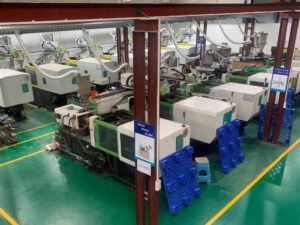Ten principles of supplier development and selection
1、The basic guideline of supplier development is "QCDS" principle, that is, the principle of quality, cost, delivery and service together.
2、in these four, the quality factor is the most important, first to confirm whether the supplier has established a stable and effective quality assurance system, and then to confirm whether the supplier has the equipment and process capability to produce the specific products required
3、followed by cost and price, to use the value engineering approach to cost analysis of the products involved and achieve cost savings through win-win price negotiations.
4、Then, in terms of delivery, it is necessary to determine whether the supplier has sufficient production capacity, whether human resources are sufficient, and whether there is potential to expand production capacity.
5、the last point, but also very important is the supplier's record of pre-sales and after-sales service.
Ten principles of supplier selection
1、Principle of system comprehensiveness:
The establishment and use of a comprehensive systematic evaluation system.
2、concise scientific principles:
Supplier evaluation and selection steps, and selection process are transparent, institutionalized and scientific.
3、the principle of stability and comparability:
The evaluation system should be stable in operation, with uniform standards and less subjective factors.
4、flexible operability principle:
Supplier evaluation should be different for different industries, companies, product needs, and different environments, maintaining a certain degree of flexibility and operability.
5、The principle of door-to-door matching:
The size and level of suppliers is comparable to that of purchasers.
6、half of the proportion of the principle:
The purchase quantity does not exceed 50% of the supplier's capacity and opposes suppliers who supply the full amount.
If only one supplier is responsible for 100% of the supply and 100% of the cost sharing, the purchaser is more risky, because once the supplier has problems, according to the development of the "butterfly effect", it is bound to affect the normal operation of the entire supply chain.
7、 the supply source quantity control principle:
The number of suppliers of the same type of material is about 2~3, and the difference between primary and secondary suppliers.
This reduces management costs and improves management effectiveness, ensuring stability of supply.
8、Supply chain strategy principles:
Develop strategic supply chain partnerships with key suppliers.
9、Learning update principle:
The evaluation guidelines, the benchmark comparison objects, and the evaluation tools and techniques need to be constantly updated.
10、general principles - comprehensive, specific, objective principles:
Establish and use a comprehensive supplier evaluation index system to make a comprehensive, specific and objective evaluation of suppliers.
Consider suppliers' performance, equipment management, human resource development, quality control, cost control, technology development, user satisfaction, delivery agreements, and other aspects that may affect the supply chain partnership.
Second, the ten principles of supplier quality management
Traditional incoming material quality management is mainly for IQC internal management, and external as a reactive relationship.
Because of the accompanying pursuit of quality improvement and win-win situation, IQC incoming material quality management will be transformed into source quality management for suppliers.
Companies do not deal with suppliers passively, but proactively guide, change, manage and maintain quality relationships between them.
1、The purchaser can send full-time resident staff to important suppliers, or frequently conduct quality inspection on suppliers.
2、The purchaser regularly or irregularly conducts quality testing or on-site inspection of the supplied goods.
3、Buyers reduce their over-reliance on individual suppliers' large accounts and diversify their procurement risks.
4、The purchaser sets the acceptance standards for each purchased part, and the acceptance handover protocols with suppliers.
5、For the selected suppliers, the company and the company enter into a long-term supply cooperation agreement, in which the rights and obligations of both parties and the conditions of mutual benefit are specified.
6、Purchasers can set up SJQE at suppliers. SJQE plays the role of customers so as to promote the quality of suppliers.
7、the purchaser regularly or irregularly to the supplier grade evaluation, the development and implementation of the implementation of incentives and penalties.
8、Annual re-evaluation of suppliers, not meet the requirements to be eliminated, from the candidate team to supplement the qualified suppliers.
9、purchasers of key materials supplier upstream manufacturers to monitor the quality of management.
10、Control the supplier material process parameter changes or design changes are subject to the confirmation and approval of the purchaser.
Three, online supplier quality network management
Today there are many information-based solutions that hide quality improvements and cost-cutting methods.
The company can build a supplier quality monitoring platform through information technology to monitor and analyze the quality of all aspects of the supplier in real time, so as to achieve the purpose of quality control, so that bad products do not flow out.
Main manifestations.
1、Effectively track the implementation status of the vendor's improvement on bad issues.
2、Real-time dynamic interaction of quality information between buyers and suppliers, effectively achieving the purpose of PDCA cycle.
3、The paperless operation of both sides and the rapid generation of data charts, saving costs to achieve a mutual win-win situation.
4、The purchaser can focus on the control of the incoming material part according to the quality condition of the manufacturer's production. Avoiding disorderly beating of birds and saving human resources.
5、Data query is convenient and fast, no need to go through the supplier, the data is real and reliable.
What are the main items of supplier assessment?
Purchasing personnel usually evaluate suppliers in terms of price, quality, delivery time and cooperation (service), and calculate the score on a percentage basis, depending on the circumstances of each company.
1、Price:
According to the lowest price, highest price, average price of similar materials in the market, their own estimate, and then calculate a more standard and reasonable price.
2、Quality:
1) batch return rate: according to a fixed period of time (such as a month, a quarter, half a year, a year) to determine the quality of the batch return rate, such as the first half of a supplier delivery 50 batches, sentenced back 3 batches, the batch return rate = 3 ÷ 50 × 100% = 6%, the higher the batch return rate, indicating that the poorer the quality, the lower the score.
2) Average pass rate: According to the pass rate of each delivery, and then calculate the average of the pass rate within a fixed period of time to determine the quality of good or bad, such as a supplier in January 3 deliveries, the pass rate were: 90%, 85%, 95%, the average pass = (90% + 85% + 95%) ÷ 3 = 90%, the higher the pass rate, indicating that the better the quality, the higher the score.
3) Total qualified rate: According to the total qualified rate in a fixed period of time to determine the quality of good or bad, such as a supplier in the first quarter in five batches, a total of 10,000 deliveries, the total number of qualified 9850, then its qualified rate = 9850 ÷ 1000 × 100% = 98.5%, the higher the qualified rate, indicating that the better quality, higher scores.
3、Delivery delivery quantity:
Delivery rate = number of deliveries ÷ number of orders × 100%, the higher the delivery rate, the more points will be deducted. Overdue rate: = number of overdue batches ÷ number of delivery batches × 100%, the higher the overdue rate, the less points will be scored; the longer the overdue rate, the more points will be deducted; the overdue causes stoppage of work pending material, the more points will be deducted.
4、Cooperativeness (service):
The better the service, the more the score.
The above three scores will be added up to get the total score for the final assessment and evaluation score, which is used to assess the performance of suppliers.
What are the main control points for supplier evaluation?
Usually the control points of supplier evaluation are mainly as follows.
1、the supplier's security selection and selection conditions.
2、Survey of suppliers' quality assurance capability.
3、The supplier's sample quality identification.
4、The content and steps of supplier evaluation are determined.
5、Review and approval of supplier evaluation conclusion.
6、Approval of qualified suppliers.
7、The establishment of qualified supplier files.
8、The supply of qualified suppliers is regularly monitored and assessed.
9、According to the regular assessment of suppliers, the superiority and inferiority or counseling.
10、Supervision and the disposal of problems found.
What are the main control methods for suppliers?
The control of the crowd of suppliers can be based on the size of the material procurement amount,
ABC classification of suppliers, well divided into key, general, non-key suppliers, and then according to different suppliers according to the following methods to carry out different controls.
1、Send permanent representatives.
2、Surveillance and inspection at the factory on a regular or irregular basis.
3、Set up supervision points to supervise and inspect key processes or special processes.
4、the finished product joint inspection, can be carried out by the customer together with the procurement staff to the supplier to implement the joint full inspection.
5、the supplier is required to report in a timely manner the production conditions or production methods of major changes (such as contracting out, etc.).
6、Organize management and technical personnel to counsel suppliers to improve their quality level and meet the company's Pinnan requirements.
7、Provided by the supplier on the process control of the relevant inspection records.
8、Inspection of incoming goods.
What are the ways to choose a qualified supplier?
Qualified suppliers should have the ability to provide products that meet the requirements of specifications, drawings and procurement documents, and the methods of selecting and evaluating qualified suppliers are usually
1、 the evaluation of the supplier's production capacity.
2、Site evaluation of supplier quality assurance system.
3、Evaluation of product samples.
4、Compare the history of similar products.
5、Compare the inspection and test results of similar products.
6、Compare the experience of other users.






